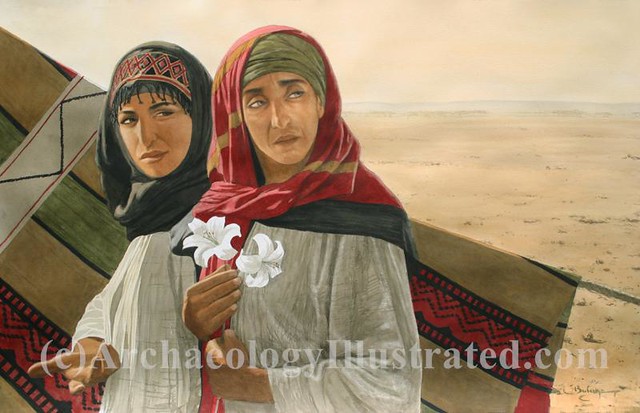This was a very magical book- those who like Alice Hoffman will love Diamant's rendition of Old Testament women. Those unfamiliar with the story of Jacob definitely want to at least
Sparknotes that part of Genesis before picking this up. The Red Tent is a feminine power book with a unique spin on the story of Jacob and his wives, mainly Rachel and Leah; it also addresses the religion of the wives pre-Jacob and life within their world.
 |
| The women might have looked like this |
The development of their father Laban and their mother added the background one wishes for when reading about these Jewish matriarchs. Those who can't read gory stuff or may visualize what's going on in books should be careful when reading this book. It's a girls' book, and we deal with periods and childbirth and midwifery and such. It also gives creative interpretation of why Rachel backed out of marrying Jacob at the last minute at their first wedding; those who imagined it was because the elder Leah should have gone first would not be wrong, but Diamant shows it may have been more than that.
 |
| This chart may help you with all the names. |
Finally, and in my opinion the best part, the story develops the Rape of Dinah. In Genesis Chapter 34, Jacob's daughter Dinah goes to the nearby town of Shechem and is seduced by the prince. He then goes to Jacob and promises to marry her and convert he and his people to Judaism. However, Dinah's brothers took her seduction as an insult (“Should our sister be treated like a whore?”) and they slay the town of Shechem while the men lay in pain from circumcision.

It is interesting that readers never hear the story from Dinah's POV; indeed, we are never given her opinion of the event, and her mother and aunts are likewise silent. Why? Who wrote this story and what was the purpose of it? Diamant's novel seeks to portray some possible answers to these questions.
 |
| Medieval interpretation by Giuliano Bugiardini |
I read this book before I took a classes on women of the Old Testament and the Book of Genesis, so I had problems separating the fictitious book from the biblical literature. However, I feel this shows the skill in Diamant's leadership; she picked details from scripture and commentary to build these images of women who began multiple religions, and made them more lifelike to modern readers.





No comments:
Post a Comment